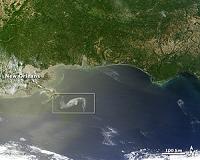| . |  |
. |
Port-Au-Prince (AFP) May 18, 2010 The head of the UN mission in Haiti Edmond Mulet unveiled new efforts Tuesday to provide secure housing to thousands of people made homeless by January's devastating earthquake. One key component of the UN plan would offer assistance to homeowners, enabling them to rehabilitate houses that might have been damaged but are still basically sound. "We're in the process of identifying houses that haven't been totally demolished to help the owners make the necessary repairs, so that they will be encouraged to return home and also provide shelter to others in need," Mulet said. January's quake left more than 1.3 million people in need of shelter and claimed as many as 300,000 lives. Five months after the quake, several hundred thousand people remain camped out in tent cities and streets in the capital Port-au-Prince. "After having supplied tents to the majority of quake victims, it's now time to get on with the next phase -- providing more solid and secure homes to people now that the rainy season is here and hurricane season is on the way," Mulet said as he visited an outdoor camp that is home to some 8,000 people on the border of notorious Cite Soleil shantytown. The UN's Office for the Coordination of Humanitarian Affairs (OCHA) has for months been saying that people in the camps are first and foremost being given the option to return to their homes, where possible, although many are scared to do so because of the risk of another quake. The 7.0-magnitude quake on January 12 left much of Haiti's capital Port-au-Prince in ruins, destroying infrastructure and the seat of government and causing a humanitarian catastrophe in a country already considered the poorest in the Americas. About half a million people left Port-au-Prince after the quake, said Imogen Wall, a UN spokeswoman for humanitarian affairs. "Some of them have come back, some have come back temporarily. Some haven't come back but are thinking about it as their houses are assessed. We know that a lot of people will never go back," Wall said. She said about 40 percent of the city's houses are safe, and occupancy rates in those are at about 50 percent. "Which means people are now feeling able to go back to their homes, which is what we need them to do ahead of the hurricane season," she said. "The camps are not an acceptable or a sustainable solution for anybody at this point." Efforts are focused now on getting the homeless out of camps in public spaces and into temporary wooden structures that are strong enough to survive the hurricane season, she said. But finding space to accommodate the new "transitional" housing is difficult, she added. "This is our key challenge right now. This is a very congested city and transitional shelter needs space," she said. "Finding the capacity to clear the rubble from where you could put buildings up is also a major challenge." Adding urgency to the task is that after the quake, many of Haiti's homeless moved to places that are vulnerable to landslides, particularly during the hurricane season, UN officials said. But resettling them in safer places is "not an easy task," said George Ola-Davies, a spokesman for the UN Mission in Haiti. "We're still looking out for more areas where they could go to for other temporary relocation before permanent or semi-permanent buildings start going up for them to move into," he said. "That is another big challenge."
Share This Article With Planet Earth
Related Links Bringing Order To A World Of Disasters A world of storm and tempest When the Earth Quakes
 BP says tube is containing one fifth of oil spill
BP says tube is containing one fifth of oil spillNew Orleans, Louisiana (AFP) May 17, 2010 BP said Monday that about 20 percent of the oil gushing into the Gulf of Mexico is being swallowed up by its insertion tube system and no longer feeding a giant slick off Louisiana. The British energy giant also said it was gearing up for an operation called a "top kill" to inject tonnes of heavy drilling "mud" into the well to stanch the flow before permanently sealing it with cement. " ... read more |
|
| The content herein, unless otherwise known to be public domain, are Copyright 1995-2010 - SpaceDaily. AFP and UPI Wire Stories are copyright Agence France-Presse and United Press International. ESA Portal Reports are copyright European Space Agency. All NASA sourced material is public domain. Additional copyrights may apply in whole or part to other bona fide parties. Advertising does not imply endorsement,agreement or approval of any opinions, statements or information provided by SpaceDaily on any Web page published or hosted by SpaceDaily. Privacy Statement |